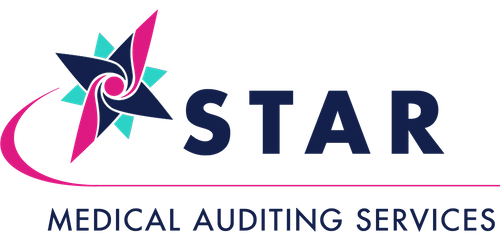Specified vs. Unspecified Coding Documentation; What’s the Big Deal?
When it comes to clinical documentation, specificity is crucial. Detailed documentation ensures that the patient's medical record accurately reflects their health status, and the care provided. This precision is vital for several reasons, including for patient care as well as healthcare billing and coding. In the realm of health information management (HIM) and clinical documentation improvement (CDI), the distinction between specified and unspecified coding is very significant. Unspecified coding refers to the use of codes that are not specific enough to accurately reflect a patient's diagnosis or procedure. These codes are often labeled as "NOS" (Not Otherwise Specified) or "NEC" (Not Elsewhere Classified) and can be a result of incomplete or vague documentation. On the other hand, specified coding uses more precise codes that provide detailed information about a patient's condition or treatment, allowing for better clinical insights and accurate data for reimbursement.
Unspecified coding in clinical documentation can lead to several significant issues within the healthcare system. Here are some key problems it can cause:
Inaccurate Patient Care: Patients might receive treatments that are not optimally suited to their actual conditions, potentially leading to adverse outcomes.
Revenue Loss: Significant revenue loss can result for healthcare organizations, as they may not be compensated adequately for the care they deliver.
Increased Risk of Audits and Penalties: Healthcare organizations using unspecified codes are more likely to attract the attention of regulatory bodies and insurance companies. This can lead to increased audits, which are time-consuming and costly. If discrepancies or patterns of unspecified coding are found, organizations may face penalties, fines, and other legal consequences.
Compromised Data Quality: Poor data quality can hinder efforts to track disease trends, measure outcomes, and develop evidence-based policies and practices.
Impact on Quality Metrics and Reporting: Unspecified coding can negatively impact performance on quality metrics, affecting public reporting, accreditation, and participation in value-based care programs which can ultimately damage the reputation of healthcare providers and limit their opportunities for incentive-based reimbursements.
It is essential for healthcare providers to strive for specificity in their documentation to avoid these issues and ensure the best outcomes for both patients and their organizations. In essence, when physicians document with greater specificity, they contribute to improved patient outcomes, streamlined administrative processes, and enhanced overall healthcare quality. This attention to detail not only benefits the healthcare providers but also significantly enhances the patient's experience and safety.
One way to strive for that specificity is clinical documentation improvement (CDI) I audits. A CDI audit is essential for ensuring the accuracy and quality of clinical documentation. Here are the top reasons why a CDI audit might be conducted:
Compliance and Regulatory Requirements: Ensuring that documentation meets the requirements set by entities such as Medicare, Medicaid, and other regulatory bodies helps avoid potential legal issues, penalties, and fines.
Revenue Integrity: CDI audits help identify discrepancies between the documented clinical conditions and the codes submitted for billing ensuring that healthcare providers receive appropriate compensation for the services rendered, reducing the risk of underbilling or overbilling.
Quality of Care and Patient Safety: CDI audits help identify gaps or inaccuracies in documentation that could compromise patient safety. By addressing these issues, healthcare organizations can improve patient outcomes and reduce the likelihood of medical errors.
Performance Improvement: By identifying patterns of incomplete or inconsistent documentation, to then provide targeted education and training for healthcare providers will bring continuous improvement in documentation practices leading to better data quality and operational efficiency.
Benchmarking and Reporting: Healthcare organizations often use clinical documentation data for various reporting and benchmarking purposes. CDI audits ensure the accuracy and completeness of this data, which is essential for internal performance tracking, external reporting, and participation in value-based care initiatives.
In summary, transitioning from unspecified to specified coding is a critical step for improving clinical documentation, ensuring accurate reimbursement, and enhancing overall healthcare quality. By regularly conducting CDI audits, healthcare organizations can achieve better outcomes for both patients and providers. It requires collaboration between healthcare providers, coders, and CDI professionals to ensure that documentation is thorough and precise, ultimately leading to better patient outcomes and a more efficient healthcare system.
If your organization is interested in creating a CDI program, having its current CDI team audited for missed opportunities and incorrect DRG assignments, or if you have a CDI staff member out of office and need interim coverage, reach out to STAR Medical Auditing Services and learn how our CDI nurses can help!
